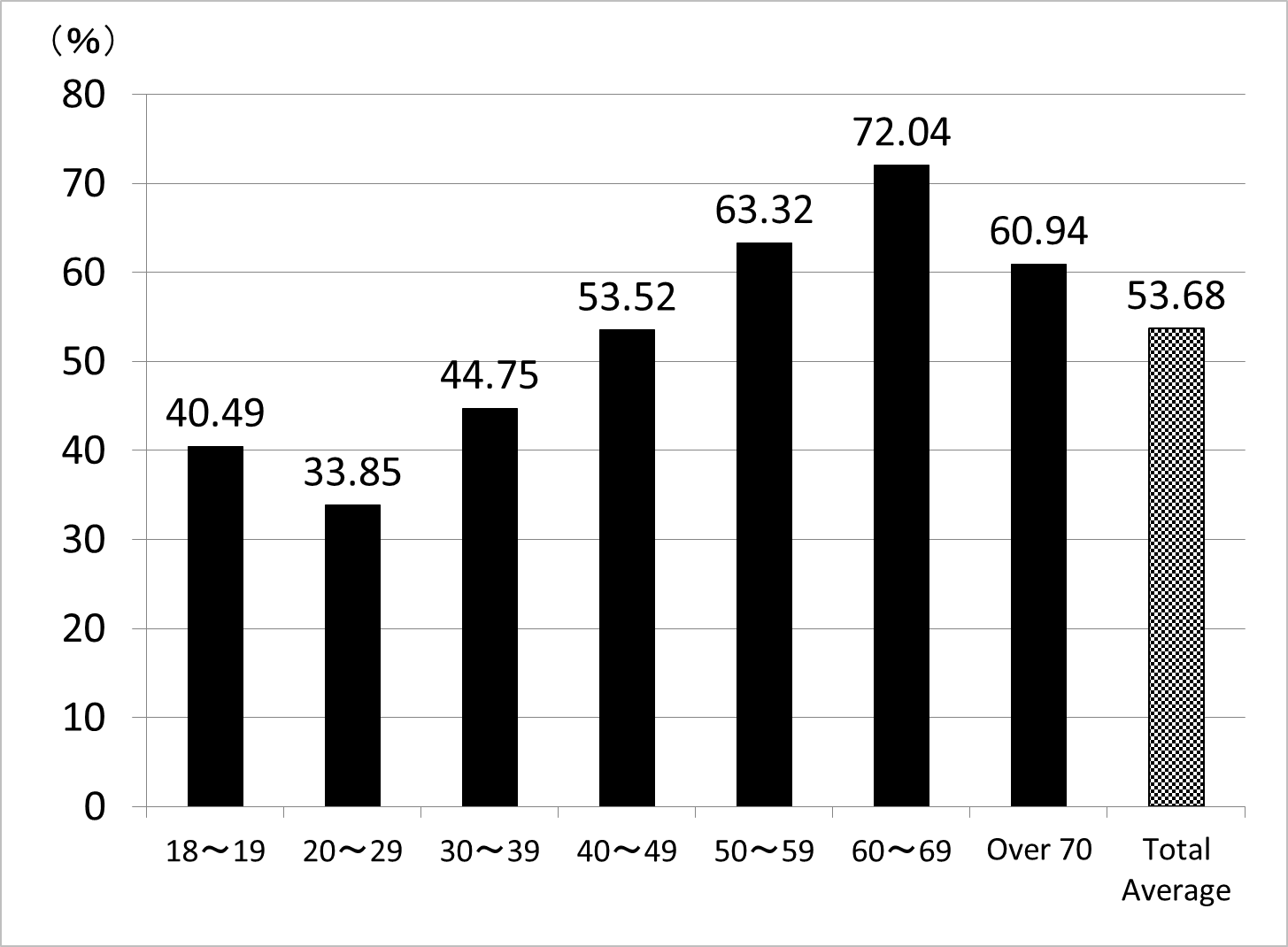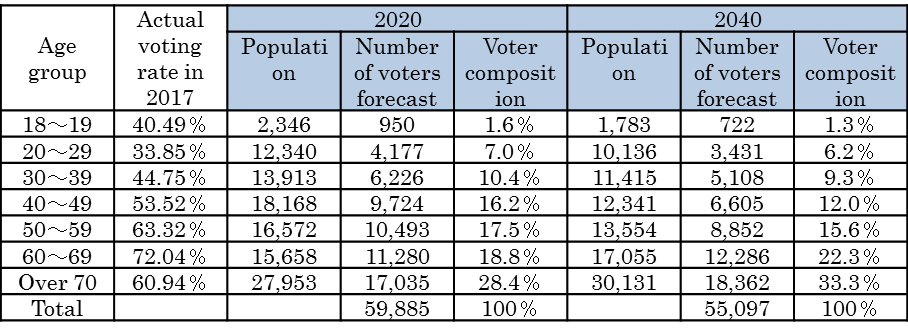Column Finance and the Social Security System 2018.02.22
【Aging, safety net and fiscal crisis in Japan】No.39: Age Composition of Voters in a Silver Democracy
The Government of Japan has continued issuing deficit bonds to maintain the current social security system. This is because politicians are afraid to lose elections if elderly people are disgruntled as a result of the reduction in pension, medical care, and long-term care benefit for fiscal reconstruction. A policy favorable to the elderly is a disadvantageous policy that imposes a heavy burden on future generations. Therefore, in 2016, the age of voting rights was lowered from 20 years to 18 years in order to make it easier for the younger generation to express their opinions.
As shown in Figure 1, in the general election of the House of Representatives held in October 2017, the voting rate for the ages 18 to 19 was 40.49%. This is much lower than the voting rates of all ages, 60 to 69, and over 70 ? 53.68%, 72.04%, and 60.94%, respectively. I calculated the prospective voter constitution assuming that these voting rates by age group are unchanged. As shown in Table 1, the percentage of voters aged 60 or older is expected to increase from 47.2% in 2020 to 55.6% in 2040. In order to break down the adverse effects of a silver democracy, it is necessary to raise the voting rate of people under the age of 59.

(Source)The Ministry of Internal Affairs and Communications

